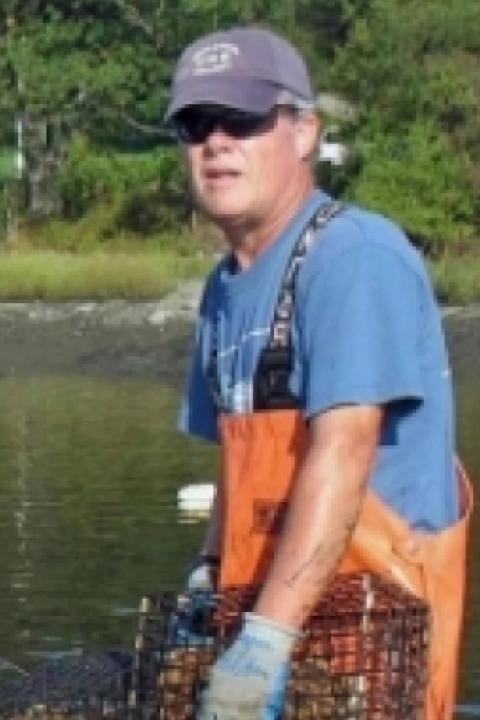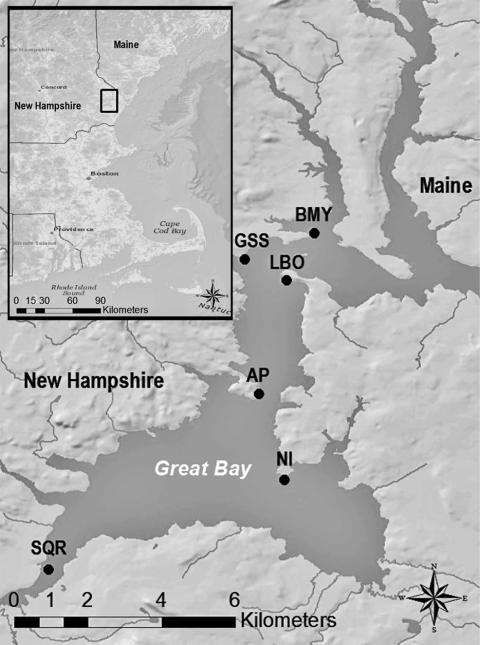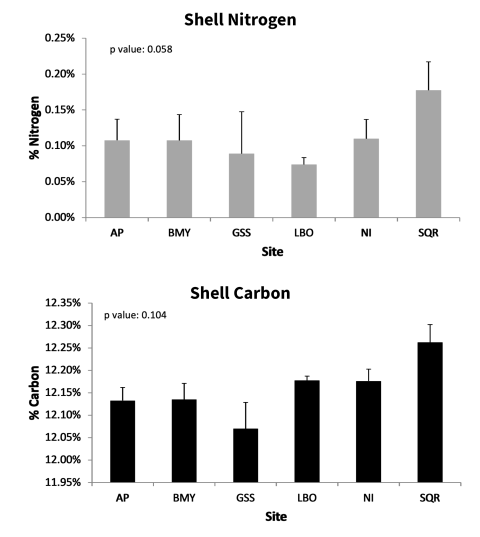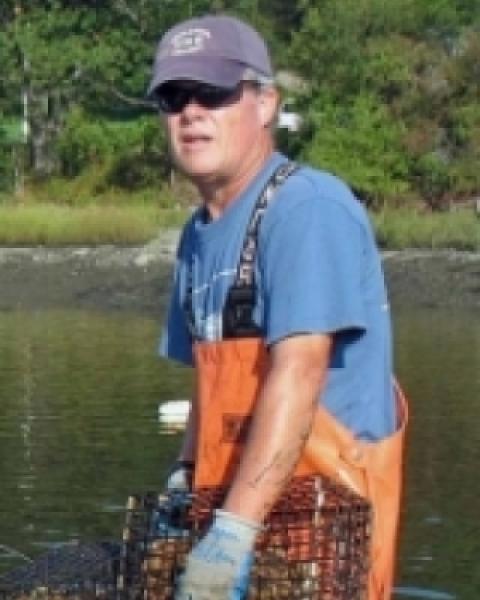This research was published in the INSPIRED: A Publication of the New Hampshire Agricultural Experiment Station (Fall 2024)
Researchers: R. E. Grizzle, K. M. Ward, C. R. Peter, M. Cantwell, D. Katz and J. Sullivan
Eutrophication—excess nutrients like nitrogen (N) and carbon (C) in coastal waters—remains a critical global issue, which can lead to harmful algal blooms and degraded water quality. Traditional nutrient management has focused on reducing land-based sources, such as agricultural runoff and wastewater discharge, but recent research highlights the potential for farmed bivalve shellfish such as oysters to help mitigation efforts. New Hampshire’s Great Bay provides a useful ecosystem in which this potential can be tested and assessed because of the location's resurging aquaculture industry, the continued efforts and issues associated with nutrient-rich runoff from rivers, and the diverse ecosystem that the estuary provides to the region.
Background and Key Concepts
Eutrophication is the process by which water bodies become enriched with excess nutrients, leading to excessive algal growth and degraded water quality. This overgrowth of algae results in harmful algal blooms, which can produce toxins detrimental to aquatic life and human health. Additionally, it leads to oxygen depletion as decomposing algae consume oxygen, creating “dead zones” where most marine life cannot survive. The loss of biodiversity follows, disrupting the balance of aquatic and surrounding ecosystems.
Nutrient bioextraction is the process of biological removal of excess nutrients from the ecosystem. Nutrient assimilation is the process by which organisms incorporate these nutrients into their biomass, effectively sequestering them.
Bivalve shellfish aquaculture could play a crucial role in estuarine nutrient management. Studies have shown that suspension-feeding bivalves, like Eastern oysters (Crassostrea virginica), can effectively filter out and assimilate nutrients from the water, thus helping mitigate eutrophication. As such, oyster farming could provide dual benefits: increasing regional food production and helping reduce nutrient levels, improve water quality, and enhance estuarine ecosystem health.
This study assessed how the growing oyster farming industry in New Hampshire's Great Bay could aid nutrient management in this key estuary.
Methodology
Key Findings
- Farmed oysters could play an important role in removing nitrogen (N) and carbon (C) from aquatic environments, contributing to water quality improvement and local food markets.
- Local environmental conditions, including chlorophyll-a concentrations and strong tidal currents, support faster oyster growth.
- Ambient nutrient levels, oyster size, and seasonal changes significantly impact the N and C content in oyster tissues and shells.
About the Co-author

Raymond Grizzle, Research Professor of Biological Sciences
Contact information: Raymond.Grizzle@unh.edu, FindScholars profile

Fig. 1. Six sites where oysters were deployed, 2010–2012. Sites include Bellamy River mouth (BMY); Granite State Shellfish (GSS); Little Bay Oyster Company (LBO); Adams Point (AP); Nannie Island (NI); and Squamscott Rivers (SQR).
The six sites (Fig. 1) chosen for this study included two oyster farms and four locations near river mouths with varying environmental conditions. Hatchery-reared oysters were deployed in polyethylene bags and monitored over a period of two years. Measurements were taken multiple times, and measured variables included shell height, wet weight, dry weight, and nutrient content (N and C) in both the soft tissue and shells.
Elemental analysis was performed using standardized laboratory procedures to determine nutrient concentrations. Data analysis involved comparing growth rates and nutrient content across sites and seasons to assess environmental impacts on oyster performance. Statistical analyses, including ANOVAs and regression models, were used to interpret the data.
Discussion of Findings
The study revealed significant variability in growth rates and nutrient content of eastern oysters across the six sites. Oysters at sites with higher ambient nitrogen levels, such as those near river mouths with elevated dissolved inorganic nitrogen, exhibited increased nitrogen content in both their soft tissue and shells (Figs. 2 and 3). This suggests that oysters in nutrient-rich environments can more effectively assimilate and sequester nitrogen and carbon.
Growth rates differed notably among sites, indicating that environmental conditions play a crucial role. Locations with higher chlorophyll-a concentrations and stronger tidal currents supported faster oyster growth. For example, oysters at Nannie Island showed the highest growth rates, while those at Granite State Shellfish had the slowest.

Fig. 3. Soft tissue %N and %C by site using combined data from all years and seasons. P-values shown are for an ANOVA testing the effect of site. Letters indicate significance among means. Sites include Adams Point (AP), Bellamy River mouth (BMY), Granite State Shellfish (GSS), Little Bay Oyster Company (LBO), Nannie Island (NI), and Squamscott Rivers (SQR).

Fig. 2. Shell %N and %C by site using combined data from all years and seasons. P-values shown are for an ANOVA testing the effect of site. Sites include Adams Point (AP), Bellamy River mouth (BMY), Granite State Shellfish (GSS), Little Bay Oyster Company (LBO), Nannie Island (NI), and Squamscott Rivers (SQR).
Seasonal variations also impacted nutrient content, with oysters generally exhibiting higher nitrogen levels in the fall compared to the spring. This seasonal fluctuation aligns with changes in the oysters’ physiological states and environmental nutrient availability, highlighting the complex interplay between biological and environmental factors in nutrient assimilation.
Strategic Recommendations and Conclusion
Oyster farming presents a valuable strategy for nutrient management in estuarine ecosystems, particularly in mitigating coastal eutrophication. To maximize the bioextraction benefits, however, it is crucial to consider site-specific environmental conditions, such as ambient nutrient levels, tidal currents, and chlorophyll-a concentrations. Strategic placement of oyster farms in nutrient-rich areas can enhance nitrogen and carbon removal efficiency.
Additionally, adjusting farming practices to account for seasonal variations can optimize nutrient assimilation. Regional planning efforts that integrate these findings can simultaneously enhance the ecological and economic sustainability of oyster farming and the environment.
The findings underscore the potential of oyster farming as a tool for nutrient management in New Hampshire's and regional estuarine ecosystems, particularly through effective nitrogen and carbon bioextraction. Policies that recognize shellfish farming's contribution to environmental sustainability are likely to more accurately account for the benefits in the trade-off calculation of enabling greater access to shellfish farming sites. Future research should explore the impact of diverse farming methods and further investigate the dynamics of nutrient content across various environmental contexts to fully harness the ecological potential of oyster farming.
This material is based on work supported by the NH Agricultural Experiment Station through joint funding from the USDA National Institute of Food and Agriculture (under Hatch award number 1013469) and the state of New Hampshire.

